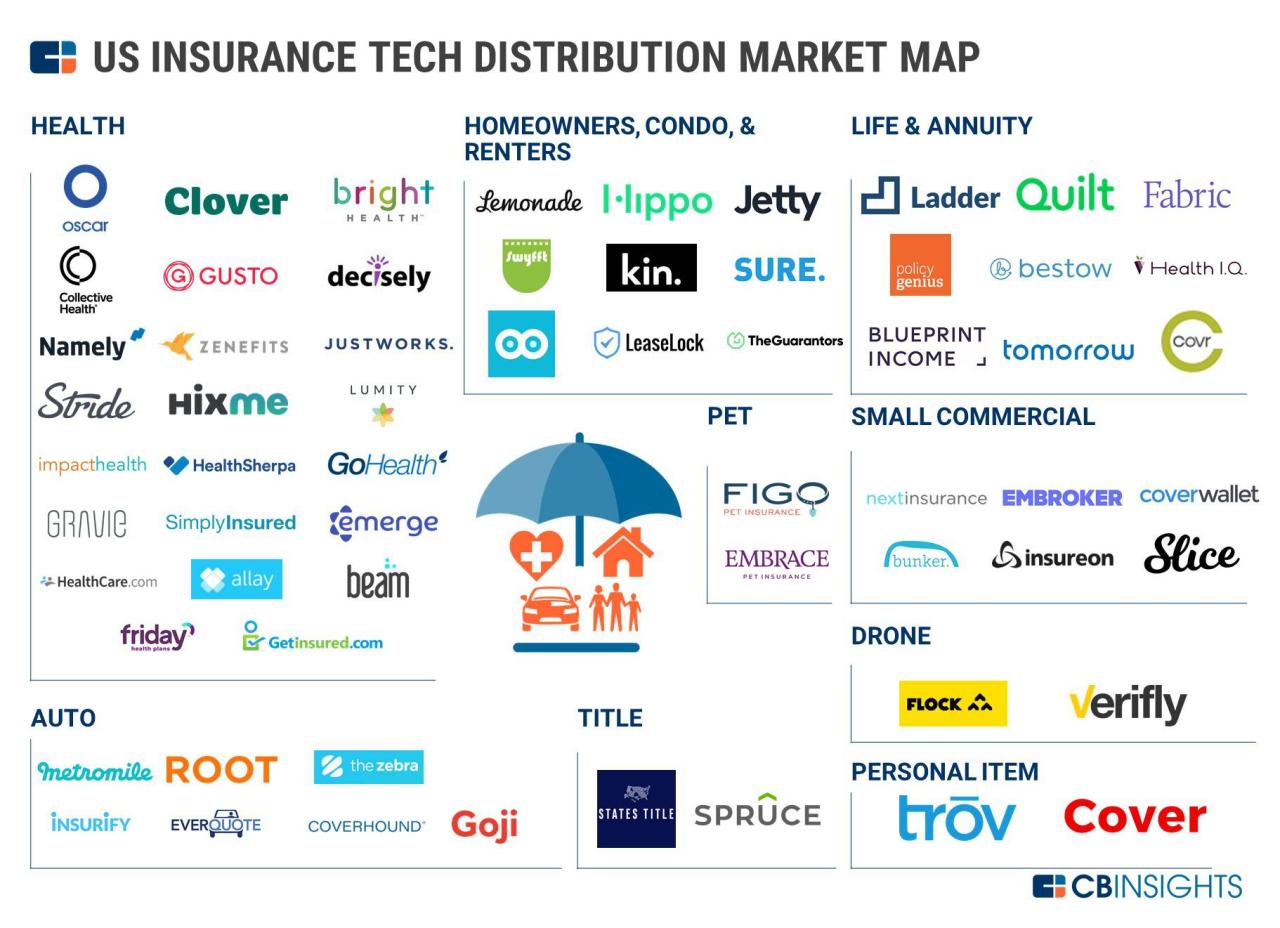Georgia residents seeking affordable health insurance face a complex landscape, but understanding the state’s marketplace can unlock access to quality coverage. The Affordable Care Act (ACA) has transformed healthcare access, offering subsidies and plans through the marketplace, but navigating this system requires knowledge and strategy.
This guide delves into the intricacies of Georgia’s marketplace, offering insights into eligibility, plan types, financial assistance, and enrollment processes. We’ll explore key factors influencing costs, provide tips for choosing the best plan, and equip you with the resources to make informed decisions about your health insurance.
Understanding Marketplace Insurance in Georgia
The Affordable Care Act (ACA), often referred to as Obamacare, created health insurance marketplaces, also known as exchanges, in every state, including Georgia. These marketplaces serve as online platforms where individuals and families can compare and purchase health insurance plans from various private insurance companies.
The Role of the Affordable Care Act (ACA)
The ACA’s primary objective is to expand health insurance coverage to more Americans. In Georgia, the ACA’s implementation has led to the creation of the state’s health insurance marketplace, known as the Georgia Health Insurance Marketplace. The marketplace provides a centralized location for individuals to shop for and enroll in health insurance plans that meet their specific needs and budgets.
Eligibility Requirements for Marketplace Insurance in Georgia
To qualify for marketplace insurance in Georgia, individuals must meet certain eligibility criteria. These criteria include:
- Residency: You must be a resident of Georgia.
- Citizenship or Legal Residency: You must be a U.S. citizen or a lawful permanent resident.
- Income: Your income must fall within certain limits, which vary depending on household size and other factors.
The marketplace website provides a tool to estimate eligibility based on income and household size.
Types of Plans Available on the Georgia Marketplace
The Georgia marketplace offers a variety of health insurance plans from different private insurance companies. These plans are categorized into four metal tiers based on their coverage levels and premiums:
- Bronze: These plans have the lowest premiums but cover the least amount of healthcare costs. They typically have higher deductibles and copayments.
- Silver: These plans offer a balance between premiums and coverage. They have lower deductibles and copayments than bronze plans but higher premiums.
- Gold: These plans provide more comprehensive coverage than silver plans, with lower deductibles and copayments, but also higher premiums.
- Platinum: These plans offer the most comprehensive coverage, with the lowest deductibles and copayments, but also the highest premiums.
Each plan also includes a variety of coverage options, such as preventive care, prescription drugs, and mental health services.
Navigating the Georgia Marketplace

The Georgia Marketplace, officially known as the Health Insurance Marketplace, is the platform where individuals and families can find and enroll in affordable health insurance plans. Navigating the marketplace can seem daunting, but with the right information and resources, you can find a plan that meets your needs and budget.
Enrollment Process
Enrolling in marketplace insurance in Georgia involves several steps. First, you’ll need to create an account on the marketplace website. During the account creation process, you’ll be asked to provide personal information, including your name, address, Social Security number, and income details. This information will be used to determine your eligibility for financial assistance and to find plans that fit your needs.
Once your account is created, you can begin exploring available plans. The marketplace offers a wide range of plans from different insurance companies, each with varying coverage and costs. You can use the marketplace’s search tools to filter plans based on your preferences, such as coverage levels, provider networks, and monthly premiums.
After you’ve identified a few plans that interest you, you can compare them side-by-side using the marketplace’s comparison tool. This tool allows you to see the costs, benefits, and coverage details of each plan, making it easier to choose the best option for your situation. Once you’ve selected a plan, you can enroll online or by phone.
Resources for Finding Insurance Plans
The Georgia Marketplace provides several resources to help individuals find the right insurance plan. These resources include:
- Plan Finder Tool: This tool allows you to search for plans based on your zip code, income, and other criteria. You can also use the tool to compare plans side-by-side.
- Plan Comparison Tool: This tool provides a detailed comparison of plans, including their costs, benefits, and coverage details.
- Plan Navigator: This tool provides personalized guidance and support to help you navigate the marketplace and find the right plan.
- Help Center: The help center offers answers to frequently asked questions and provides contact information for customer support.
Marketplace Website Features
The Georgia Marketplace website offers several features to help individuals find and enroll in insurance plans. These features include:
- Account Management: You can manage your account, update your information, and view your plan details.
- Plan Search: You can search for plans based on your needs and preferences.
- Plan Comparison: You can compare plans side-by-side to find the best option for your situation.
- Enrollment: You can enroll in a plan online or by phone.
- Financial Assistance: You can apply for financial assistance to help offset the cost of your premiums.
Tips for Comparing Plans
When comparing plans, it’s important to consider several factors, including:
- Monthly Premiums: The monthly premium is the amount you pay for your insurance plan.
- Deductible: The deductible is the amount you pay out-of-pocket before your insurance coverage kicks in.
- Co-pays and Co-insurance: Co-pays are fixed amounts you pay for specific services, while co-insurance is a percentage of the cost you pay for services after your deductible is met.
- Provider Network: The provider network is the list of doctors and hospitals that are covered by your insurance plan.
- Coverage Levels: Different plans offer different levels of coverage, so it’s important to choose a plan that meets your needs.
It’s also important to consider your health needs and medical history when comparing plans. If you have a pre-existing condition, you may want to choose a plan with comprehensive coverage.
Remember, the best plan for you will depend on your individual circumstances. It’s important to compare plans carefully and choose one that meets your needs and budget.
Key Factors Affecting Marketplace Insurance Costs

The cost of marketplace insurance in Georgia, like in other states, is influenced by a variety of factors. Understanding these factors can help individuals make informed decisions about their insurance choices and potentially lower their overall healthcare costs.
Age
Age is a significant factor in determining marketplace insurance premiums. Generally, older individuals tend to have higher healthcare costs due to an increased likelihood of needing more medical services. This is reflected in their insurance premiums, which are typically higher for older age groups.
Income
Income plays a crucial role in determining eligibility for premium subsidies and tax credits. The Affordable Care Act (ACA) provides financial assistance to individuals and families who meet certain income requirements. These subsidies can significantly reduce the cost of marketplace insurance, making it more affordable for those with lower incomes.
For instance, a family of four with an annual income of $50,000 may qualify for a substantial subsidy, potentially reducing their monthly premium by hundreds of dollars.
Health Status
An individual’s health status also impacts their marketplace insurance premiums. Individuals with pre-existing conditions, such as diabetes or heart disease, may have higher premiums compared to those with generally good health. This is because individuals with pre-existing conditions are more likely to require medical care, leading to higher healthcare costs for insurance companies.
For example, an individual with a history of asthma might face a higher premium than someone with no pre-existing conditions, as their potential need for medical services related to their asthma is factored into the premium calculation.
Subsidies and Tax Credits
The ACA provides premium subsidies and tax credits to eligible individuals and families to help make marketplace insurance more affordable. The amount of financial assistance an individual receives depends on their income and the cost of insurance plans in their area. These subsidies can significantly reduce the cost of coverage, making it accessible to a broader population.
For example, a single individual with an income of $30,000 might receive a premium subsidy of $200 per month, reducing their monthly insurance premium from $400 to $200.
Financial Assistance and Subsidies

The Affordable Care Act (ACA) offers financial assistance to help Georgians afford health insurance through the Marketplace. These subsidies come in the form of tax credits that reduce the monthly premium cost and cost-sharing reductions that lower out-of-pocket expenses for medical care.
Eligibility Criteria for Subsidies in Georgia
To qualify for financial assistance, individuals must meet certain eligibility criteria. These include:
- Household income: The amount of financial assistance you receive depends on your household income. You must be below a certain income threshold to qualify for subsidies.
- Citizenship status: You must be a U.S. citizen or a lawful permanent resident to be eligible for subsidies.
- Immigration status: Some individuals with certain immigration statuses may also be eligible for subsidies.
Types of Subsidies
The Marketplace offers two main types of financial assistance:
- Premium tax credits: These tax credits are applied directly to your monthly premium, reducing the amount you pay for health insurance. The amount of the tax credit is determined by your household income and the cost of health insurance plans in your area.
- Cost-sharing reductions: These reductions lower your out-of-pocket costs for medical care, such as deductibles, copayments, and coinsurance. The amount of cost-sharing reduction you receive depends on your household income and the type of health insurance plan you choose.
Examples of Subsidies Reducing Out-of-Pocket Expenses
Here are some examples of how subsidies can help reduce out-of-pocket expenses for individuals:
- Example 1: A single individual with an annual income of $30,000 may be eligible for a premium tax credit that reduces their monthly premium by $100.
- Example 2: A family of four with an annual income of $60,000 may be eligible for cost-sharing reductions that lower their deductible and copayments, saving them hundreds of dollars per year.
Open Enrollment and Special Enrollment Periods
The Georgia Marketplace offers a window of time each year for individuals and families to enroll in health insurance plans. These periods are crucial for obtaining coverage and ensuring you have access to healthcare throughout the year.
Open Enrollment Period
The Open Enrollment Period (OEP) for Marketplace insurance in Georgia typically runs from November 1st to January 15th. During this time, individuals can choose or change their health insurance plan for the following year.
Special Enrollment Periods
In some cases, individuals may be eligible to enroll in a Marketplace plan outside of the Open Enrollment Period. These situations are known as Special Enrollment Periods (SEPs).
Eligibility Criteria for Special Enrollment Periods
To qualify for a SEP, you must experience a qualifying life event. These events are specific circumstances that significantly impact your need for health insurance.
Examples of Qualifying Life Events
- Marriage or Divorce: Changes in marital status can impact your coverage needs and eligibility for subsidies.
- Birth or Adoption of a Child: Expanding your family often necessitates additional coverage.
- Loss of Job or Job-Based Health Insurance: Losing employer-sponsored coverage can trigger eligibility for a SEP.
- Moving to a New County or State: A change in residence may affect your eligibility for certain plans.
- Changes in Income: A significant increase or decrease in income could impact your eligibility for subsidies or affordability of plans.
Deadlines and Dates for Enrollment and Renewal
- Open Enrollment Period: November 1st to January 15th. Plans selected during this period typically take effect on January 1st of the following year.
- Special Enrollment Period: You have 60 days from the date of your qualifying life event to enroll in a Marketplace plan. However, you must provide documentation to verify the event.
- Renewal: Your Marketplace plan will automatically renew if you don’t take action. However, you can still make changes to your plan during the Open Enrollment Period or if you experience a qualifying life event.
Marketplace Insurance and Health Coverage
The Affordable Care Act (ACA) created the Health Insurance Marketplace, a platform for individuals and families to find and purchase health insurance plans. In Georgia, the marketplace is managed by the federal government, providing a range of options for residents.
Benefits and Coverage
Marketplace plans offer a variety of benefits, including comprehensive health coverage, preventive care, and prescription drug coverage. These plans are designed to provide financial protection against high medical costs, ensuring individuals and families have access to quality healthcare.
Plan Options
Marketplace plans are categorized into four metal tiers: bronze, silver, gold, and platinum. Each tier represents a different level of coverage and cost-sharing.
- Bronze plans have the lowest monthly premiums but the highest out-of-pocket costs. They typically cover 60% of healthcare costs, leaving individuals to pay a larger share.
- Silver plans offer a balance between premiums and out-of-pocket costs, covering 70% of healthcare expenses.
- Gold plans have higher monthly premiums but lower out-of-pocket costs, covering 80% of healthcare expenses.
- Platinum plans provide the highest level of coverage, covering 90% of healthcare costs. These plans have the highest monthly premiums but the lowest out-of-pocket expenses.
Essential Health Benefits
Marketplace plans are required to cover ten essential health benefits, ensuring comprehensive coverage for a wide range of healthcare needs. These benefits include:
- Ambulatory patient services: Outpatient care, such as doctor visits, lab tests, and physical therapy.
- Emergency services: Urgent medical care, regardless of whether the individual is in the plan’s network.
- Hospitalization: Inpatient care for medical conditions requiring overnight stays.
- Maternity and newborn care: Prenatal and postnatal care, labor and delivery, and newborn care.
- Mental health and substance use disorder services: Counseling, therapy, and medication management.
- Prescription drugs: Coverage for prescription medications, with varying formularies and copayments depending on the plan.
- Rehabilitative services and devices: Physical therapy, occupational therapy, and assistive devices for individuals with disabilities.
- Laboratory services: Diagnostic testing, including blood work, biopsies, and imaging scans.
- Preventive and wellness services: Routine checkups, screenings, and immunizations to maintain health and prevent disease.
- Pediatric services: Comprehensive care for children, including well-child visits, immunizations, and dental care.
Deductibles, Copayments, and Coinsurance
Marketplace plans involve various cost-sharing mechanisms, including deductibles, copayments, and coinsurance.
- Deductible: The amount an individual must pay out-of-pocket before the insurance plan starts covering healthcare costs. Deductibles vary depending on the plan’s metal tier and can be applied annually or per service.
- Copayment: A fixed amount paid by the individual for specific healthcare services, such as doctor visits or prescriptions. Copayments are typically a set dollar amount and are paid at the time of service.
- Coinsurance: A percentage of the healthcare costs that the individual is responsible for after the deductible has been met. Coinsurance is typically applied to covered services, with the insurance plan covering the remaining percentage.
Provider Networks and Access to Care
Understanding the provider network associated with your Marketplace insurance plan is crucial. This network defines the healthcare providers, hospitals, and facilities that your plan covers. It’s essential to know who is in-network because using out-of-network providers can result in significantly higher costs.
Finding In-Network Providers and Specialists
You can easily find in-network providers using the resources provided by the Marketplace or your insurance company. These resources often include online directories, phone numbers, and search tools.
The Marketplace website allows you to search for providers by specialty, location, and other criteria. You can also contact your insurance company directly to ask for a list of in-network providers in your area.
Accessing Healthcare Services
Once you have found an in-network provider, you can access various healthcare services, including:
- Doctor visits: Routine checkups, specialist consultations, and urgent care visits are all covered under most Marketplace plans.
- Hospital care: In-patient hospital stays, emergency room visits, and surgical procedures are covered, depending on your plan.
- Prescription drugs: Most Marketplace plans offer prescription drug coverage, although you may need to use a specific pharmacy within the network.
Resources for Finding Healthcare Providers
- Healthcare.gov: The official website for the Marketplace, where you can search for providers, compare plans, and enroll in coverage.
- Your insurance company website: Most insurance companies provide online directories and tools to find in-network providers.
- Your insurance company’s customer service: You can call your insurance company directly to ask for a list of in-network providers in your area.
Marketplace Insurance and Healthcare Costs
While marketplace insurance plans offer affordable health coverage, it’s essential to understand the associated out-of-pocket costs. These costs can vary depending on the chosen plan and healthcare services utilized. Knowing these costs helps individuals make informed decisions about their healthcare and budget accordingly.
Types of Out-of-Pocket Costs
Marketplace insurance plans typically involve various out-of-pocket costs, including:
- Deductible: This is the amount you pay for healthcare services before your insurance coverage kicks in. Deductibles vary based on the plan and can range from a few hundred dollars to several thousand dollars annually.
- Copayments: These are fixed amounts you pay for specific healthcare services, such as doctor’s visits or prescriptions. Copayments are typically lower than deductibles and can vary based on the service.
- Coinsurance: This is a percentage of the cost of healthcare services you pay after meeting your deductible. For example, a 20% coinsurance means you pay 20% of the cost of a medical procedure after your deductible is met.
- Out-of-Pocket Maximum: This is the maximum amount you will pay for healthcare costs in a year. Once you reach this limit, your insurance plan covers 100% of your eligible healthcare expenses for the remainder of the year.
Examples of Out-of-Pocket Cost Variations
Out-of-pocket costs can vary significantly depending on the plan and healthcare services used. Here are some examples:
- Plan A: A high deductible plan with a $5,000 deductible and 20% coinsurance. This plan may have lower monthly premiums but higher out-of-pocket costs for major medical procedures.
- Plan B: A lower deductible plan with a $1,000 deductible and 10% coinsurance. This plan may have higher monthly premiums but lower out-of-pocket costs for routine healthcare services.
Tips for Managing Healthcare Costs
Here are some tips for managing healthcare costs and minimizing out-of-pocket expenses:
- Compare Plans: Carefully compare different marketplace plans, considering factors like deductibles, copayments, coinsurance, and monthly premiums.
- Utilize Preventive Services: Many marketplace plans cover preventive services, such as annual checkups and screenings, at no cost.
- Shop Around for Medications: Compare prices for prescription drugs at different pharmacies and consider generic alternatives when available.
- Negotiate Medical Bills: If you receive a medical bill that seems excessive, don’t hesitate to negotiate with the provider or billing department.
- Consider Health Savings Accounts (HSAs): If you have a high deductible plan, an HSA can help you save pre-tax dollars for healthcare expenses.
Navigating the Marketplace

The Georgia Marketplace is a user-friendly platform designed to help individuals and families find affordable health insurance. However, with various plans and options available, navigating the marketplace can seem overwhelming. This section provides tips and resources to simplify the process and ensure you make informed decisions.
Helpful Resources and Contact Information
The Georgia Marketplace offers a range of resources to assist consumers in navigating the platform and understanding their options.
- Official Marketplace Website: The official website, [link to the official Georgia Marketplace website], provides comprehensive information about plan options, eligibility criteria, enrollment periods, and more.
- Customer Service: The marketplace offers dedicated customer service representatives who can answer questions, resolve issues, and provide assistance with the enrollment process. You can reach them by phone at [phone number] or by email at [email address].
- Navigating the Marketplace Website: The marketplace website is designed to be user-friendly, with clear instructions and step-by-step guidance. You can use the search function to find specific plans or filter options based on your needs and budget.
- Understanding Plan Options: The website provides detailed information about each plan, including coverage details, costs, and provider networks. You can compare plans side-by-side to identify the best option for your situation.
Consumer Protection Resources and Assistance Programs
The Georgia Marketplace is committed to protecting consumers and ensuring they have access to affordable health insurance.
- Consumer Protection: The marketplace website provides information about consumer protection rights and how to report any issues or concerns.
- Assistance Programs: The marketplace offers various assistance programs to help individuals and families afford health insurance. These programs may include financial assistance, subsidies, and tax credits.
- Navigating the Marketplace: The marketplace website provides a step-by-step guide to navigating the platform, from creating an account to enrolling in a plan. You can also access online tutorials and FAQs to address common questions.
Epilogue
Navigating Georgia’s marketplace requires understanding your options, evaluating your needs, and leveraging available resources. By understanding the eligibility criteria, plan variations, and financial assistance programs, you can make informed decisions about your health insurance and ensure you have the coverage you need at a price you can afford. Remember, seeking guidance from qualified advisors and utilizing the resources available can streamline the process and lead you to the best plan for your individual circumstances.

